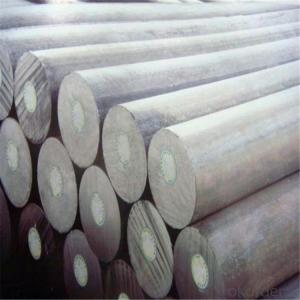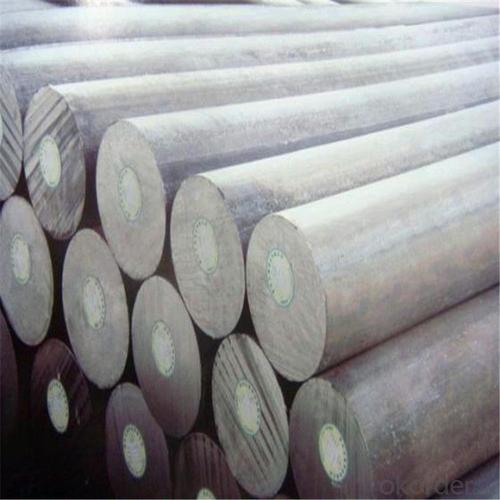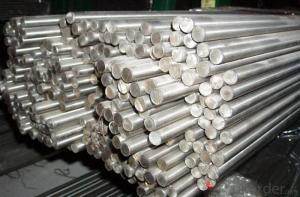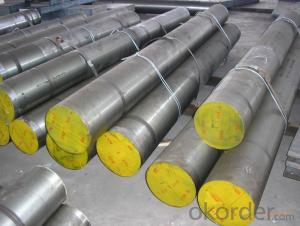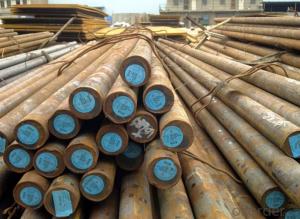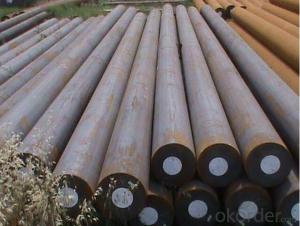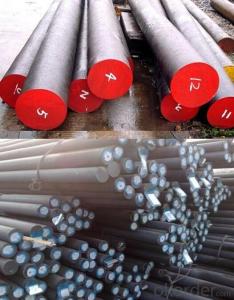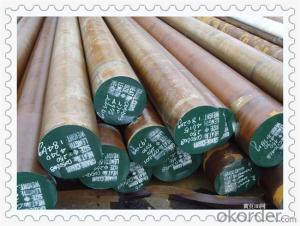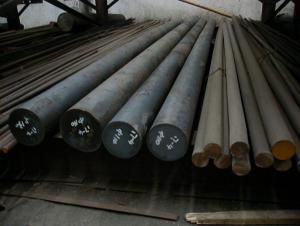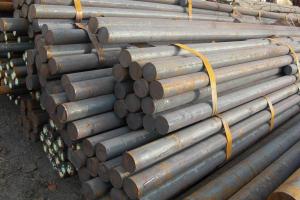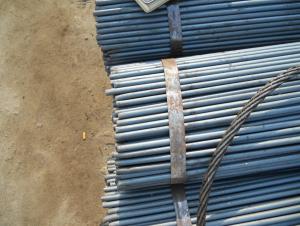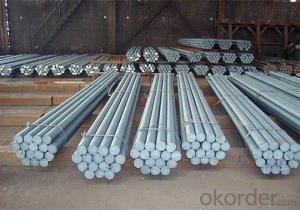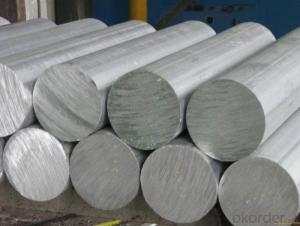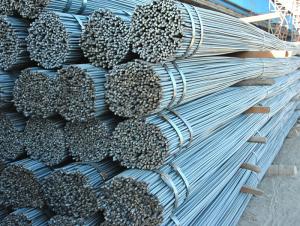100Gr6 DIN17230 Bearing Steel Round Bars
- Loading Port:
- Shanghai
- Payment Terms:
- TT OR LC
- Min Order Qty:
- 100 m.t.
- Supply Capability:
- 50000 m.t./month
OKorder Service Pledge
OKorder Financial Service
You Might Also Like
Specification
100Gr6 DIN17230 Bearing Steel Round Bars
Product Description of 100Gr6 DIN17230 Bearing Steel Round Bars
1. Steel grade: ASTM52100, SUJ2, 100Gr6, GCr15
2. Length: 6M-12M
3. Diameter: 16mm-300mm
4. Product range: round bar, flat bar, square bar
5. Technique: Hot rolled, forged, cold drawn
Specification of 100Gr6 DIN17230 Bearing Steel Round Bars
Material | 100Gr6 | Round bar | Dia(mm) | 10-300mm |
Process | EAF + LF + VD + Forged + Heat Treatment (optional) | Length (mm) | Max 12m | |
Heat treatment | Normalized / Annealed / Quenched / tempered | Flat bar | Thickness(mm) | 8-500mm |
Delivery condition | Hot forged +Rough machined (black surface after Q/T)+ Turned (optional) | Width(mm) | 70-200mm | |
Test | Ultrasonic test according to SEP 1921-84 D/d | Length (mm) | Max 12m |
Chemical Composition of 100Gr6 DIN17230 Bearing Steel Round Bars
C | Si | Mn | Cr | Ni | Mo | P | S |
0.95~1.05 | 0.15~0.35 | 0.25~0.45 | 1.40~1.65 | ≤0.30 | ≤0.10 | ≤0.025 | ≤0.025 |
Photo Show of 100Gr6 DIN17230 Bearing Steel Round Bars
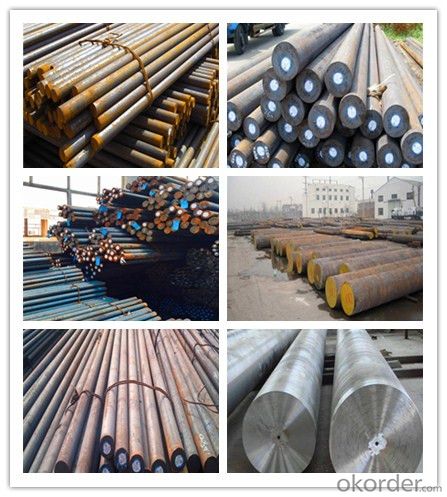
Packing and Delivery:
Packing in bundle package, or as customer's requirements.
Delivery Detail: 45 days after receiving the deposit.
Usage and Applications of 100Gr6 DIN17230 Bearing Steel Round Bars
1. Steel round bar is used in a large number of architectural and engineering structures. Or it can be used in construction of plants for the production of steel house frames, high-voltage transmission towers, bridges, vehicles, boilers, containers, ships, etc.
2. And we can use this kind of product on the performance of the mechanical parts if the demand is not very high.
3. Some special material steel round bar can be used for main shaft of steamer, hummer shank, with big section and supper force.
Company Information
CNBM International Corporation is the most important trading platform of CNBM group.
Whith its advantages, CNBM International are mainly concentrate on Cement, Glass, Iron and Steel, Ceramics industries and devotes herself for supplying high qulity series of refractories as well as technical consultancies and logistics solutions.

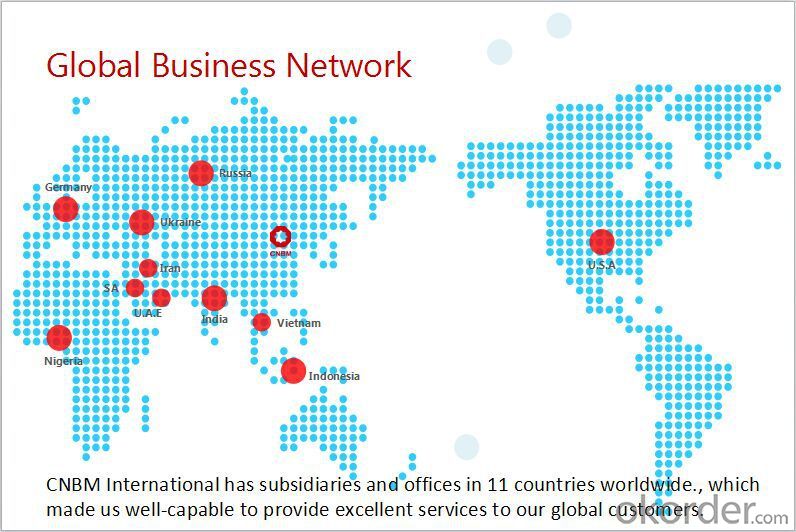
F A Q
1, Your advantages?
professional products inquiry, products knowledge train (for agents), smooth goods delivery, excellent customer solution proposale
2, Test & Certificate?
SGS test is available, customer inspection before shipping is welcome, third party inspection is no problem
3, Factory or Trading Company?
CNBM is a trading company but we have so many protocol factories and CNBM works as a trading department of these factories. Also CNBM is the holding company of many factories.
4, Payment Terms?
30% TT as deposit and 70% before delivery.
Irrevocable L/C at sight.
5, Trading Terms?
EXW, FOB, CIF, FFR, CNF
6, After-sale Service?
CNBM provides the services and support you need for every step of our cooperation. We're the business partner you can trust.
For any problem, please kindly contact us at any your convenient time.
We'll reply you in our first priority within 24 hours.
- Q: What is the difference between a bright and a cold finished steel round bar?
- A bright steel round bar and a cold finished steel round bar are two distinct types of steel bars that differ in their manufacturing processes and resulting characteristics. A bright steel round bar, also known as a turned or polished bar, undergoes a process called turning or polishing. During this process, the rough steel bar is rotated on a lathe machine and a cutting tool is applied to remove the outer layer of the bar, resulting in a smooth and shiny surface. This process not only enhances the appearance of the bar but also improves its dimensional accuracy and surface finish. Bright steel round bars are commonly used in applications where aesthetics and a high-quality surface finish are important, such as architectural components, decorative items, and certain automotive parts. On the other hand, a cold finished steel round bar undergoes a different manufacturing process called cold drawing or cold rolling. In this process, the hot-rolled steel bar is passed through a series of dies at room temperature, reducing its diameter and increasing its length. This cold working process gives the steel bar improved mechanical properties, such as increased tensile strength, improved yield strength, and enhanced dimensional accuracy. Cold finished steel round bars are often used in applications that require high strength and precision, such as shafts, gears, bolts, and tools. In summary, the main difference between a bright steel round bar and a cold finished steel round bar lies in their manufacturing processes and resulting characteristics. While a bright steel round bar is turned or polished to achieve a smooth and shiny surface, a cold finished steel round bar undergoes cold drawing or rolling to enhance its mechanical properties and dimensional accuracy. The choice between these two types of steel bars depends on the specific requirements of the application, such as the need for aesthetics, surface finish, strength, or precision.
- Q: What is the difference between a peeled and a centerless ground steel round bar?
- A peeled steel round bar refers to a process where the outer surface of the bar is removed, typically by using a peeling machine, to achieve a smooth and precise surface finish. This process helps to remove any imperfections or scale on the surface of the bar, resulting in a clean and polished appearance. The peeled round bar also undergoes a sizing process to ensure its dimensional accuracy, making it suitable for various applications where a smooth surface finish and precise dimensions are important. On the other hand, a centerless ground steel round bar refers to a process where the bar is ground using a centerless grinding machine. This process involves feeding the bar through grinding wheels that rotate at different speeds, removing material from the bar's outer diameter to achieve the desired size and surface finish. Centerless grinding allows for tight tolerances and precise sizing, making it suitable for applications that require high precision and accuracy. In summary, the main difference between a peeled and a centerless ground steel round bar lies in the process used to achieve the desired surface finish and dimensional accuracy. While both processes result in a smooth and precise bar, peeling removes material from the outer surface, whereas centerless grinding removes material from the outer diameter. The choice between the two depends on the specific requirements of the application and the desired surface finish and dimensional accuracy.
- Q: What is the difference between a cold finished and a hot rolled steel round bar?
- A cold finished steel round bar and a hot rolled steel round bar differ in their manufacturing processes and resulting properties. Cold finished steel round bars are manufactured through a cold drawing process, where the steel is pulled through a die at room temperature. This process results in a smooth, polished surface with tight dimensional tolerances. The cold drawing process also enhances the strength, hardness, and overall mechanical properties of the steel. Cold finished steel round bars are often preferred for applications where precision and a smooth surface are crucial, such as in machinery, automotive parts, and tools. On the other hand, hot rolled steel round bars are manufactured by heating the steel to a high temperature and then rolling it through a series of rollers. This process allows for the shaping and forming of the steel while it is in a pliable state. Hot rolled steel round bars have a rough, scaled surface and looser dimensional tolerances compared to cold finished bars. They also tend to have a slightly lower strength and hardness than their cold finished counterparts. Due to their more affordable cost and ease of production, hot rolled steel round bars are commonly used in construction, structural components, and general fabrication. In summary, the main differences between cold finished and hot rolled steel round bars lie in their manufacturing processes and resulting properties. Cold finished bars offer enhanced strength, precision, and a smooth surface, making them suitable for applications requiring high precision and mechanical performance. Hot rolled bars, on the other hand, have a rougher surface and looser tolerances, but their affordability and ease of production make them a popular choice for general applications.
- Q: Will the three steel is steel? It is a steel bar?
- Your question is inaccurateThread steels are grade two, grade three, grade four, and even grade fiveFirst grade steel generally refers to the wire rod, also known as wire rod, is a ribbed steel bar
- Q: What are the different types of steel round bar surface finishes for corrosion resistance?
- Corrosion resistance in steel round bars can be achieved through various surface finishes. These finishes effectively shield the bar from corrosive elements, reducing the risk of rust or degradation over time. Hot-dip galvanizing is a popular choice for corrosion resistance. It entails immersing the steel round bar in molten zinc, which creates a protective zinc coating. This sacrificial anode corrodes before the steel, providing long-lasting protection against rust and corrosion. Stainless steel is another common surface finish for corrosion resistance. With a minimum chromium content of 10.5%, it forms a passive oxide layer when exposed to oxygen. This layer acts as a barrier, preventing further oxidation and corrosion, making stainless steel round bars highly resistant to rust. Electroplating is a method used to provide corrosion resistance. By immersing the bar in an electrolyte solution and passing an electric current through it, a layer of metal like zinc or nickel is deposited onto the surface, offering a protective coating. For steel round bars that require both corrosion resistance and aesthetic appeal, powder coating is a popular choice. This process involves applying a dry powder coating to the surface and curing it under heat. The resulting hard, durable finish not only offers excellent corrosion resistance but also provides a variety of color options. There are also specialized coatings available for specific applications, such as epoxy or polymer coatings. These coatings offer superior resistance to particular corrosive environments, like exposure to chemicals or high humidity. In conclusion, there are several types of surface finishes for corrosion resistance in steel round bars. These include hot-dip galvanizing, stainless steel, electroplating, powder coating, and specialized coatings. The choice of finish depends on factors such as the specific application, environmental conditions, and desired aesthetics.
- Q: What is the difference between a peeled and a polished steel round bar?
- A peeled steel round bar and a polished steel round bar are two different types of steel bars with distinct characteristics and applications. A peeled steel round bar is a steel bar that has undergone a peeling process. During this process, the outer surface of the bar is removed, resulting in a smooth and clean finish. The peeling process removes any imperfections or scale on the surface of the bar, improving its appearance and quality. This makes peeled steel round bars ideal for applications where a smooth surface is required, such as in the manufacturing of precision components, shafts, or spindles. The process of peeling also enhances the mechanical properties of the bar, improving its strength and toughness. On the other hand, a polished steel round bar is a steel bar that has undergone a polishing process. In this process, the surface of the bar is polished using abrasive materials to create a shiny and reflective finish. The polishing process removes any surface imperfections, scratches, or dullness, resulting in a visually appealing and aesthetically pleasing appearance. Polished steel round bars are often used in decorative applications, architectural designs, or in industries where a visually attractive finish is desired, such as in furniture manufacturing or automotive accessories. In summary, the main difference between a peeled and a polished steel round bar is the process they undergo and the intended applications. A peeled steel round bar is processed to remove imperfections and improve mechanical properties, making it suitable for precision components, while a polished steel round bar is processed to create a shiny and reflective surface, making it ideal for decorative or visually appealing applications.
- Q: What are the different types of surface treatments for steel round bars?
- Steel round bars can be treated in several ways to enhance their properties and suit different applications. Some commonly used treatments for steel round bars include: 1. Zinc coating, also known as galvanization, provides excellent corrosion resistance. It is often used in outdoor and marine applications. 2. Black oxide coating chemically converts the surface of the steel round bars to a black iron oxide layer, offering enhanced corrosion resistance and an attractive black finish. This treatment is popular for decorative purposes. 3. Grinding is a surface treatment that involves using abrasive materials to remove the outer layer of the steel round bars. This process improves the surface finish, making them smoother and more visually appealing. 4. Shot blasting involves propelling small metallic or non-metallic particles at high velocity onto the surface of the steel round bars. It effectively removes impurities like mill scale and rust, resulting in a clean and uniform surface. 5. Chrome plating deposits a layer of chromium onto the surface of the steel round bars, providing excellent corrosion resistance and a polished, mirror-like finish. This treatment is commonly used when aesthetics and corrosion resistance are important. 6. Powder coating involves applying a dry powder electrostatically to the steel round bars, which is then cured under heat. This treatment creates a durable and visually appealing finish that is resistant to corrosion, chemicals, and UV rays. 7. Passivation is a chemical treatment that removes iron and other contaminants from the surface of the steel round bars. It leaves behind a clean and corrosion-resistant layer. Passivation is particularly important in industries such as medical and food, where cleanliness and corrosion resistance are crucial. These examples highlight the range of surface treatments available for steel round bars. The choice of treatment depends on specific requirements such as corrosion resistance, aesthetics, and durability.
- Q: Can steel round bars be used as axles or shafts?
- Axles or shafts can indeed be made from steel round bars. This is because steel possesses excellent strength and durability, making it a popular choice for axles and shafts. In particular, steel round bars are ideal for applications that involve rotational movement, such as axles and shafts, as they can handle heavy loads and endure bending and torsional forces. Moreover, steel round bars can be machined and heat-treated to meet specific requirements for hardness and surface finish, further enhancing their suitability for use as axles or shafts. All in all, steel round bars are a dependable and widely utilized option for axles and shafts in various industries, including automotive, machinery, and construction.
- Q: Is round steel round steel?
- Round bar is divided into three parts: hot rolling, forging and cold drawing. Standard Specification for hot rolled round steel is 5.5-250 mm. Of which: 5.5-25 mm small round bars are mostly supplied by straight strips. They are used as reinforcing bars, bolts and various mechanical parts. Round bars larger than 25 millimeters are used mainly for making mechanical parts or for seamless steel tubes.
- Q: Are steel round bars suitable for use in the marine industry?
- Yes, steel round bars are suitable for use in the marine industry. Steel is known for its strength, durability, and corrosion resistance, making it an excellent choice for marine applications. Steel round bars are commonly used in shipbuilding, offshore structures, and other marine equipment due to their ability to withstand harsh weather conditions, saltwater exposure, and heavy loads. Additionally, steel's versatility allows for easy fabrication and customization to meet specific requirements in the marine industry.
Send your message to us
100Gr6 DIN17230 Bearing Steel Round Bars
- Loading Port:
- Shanghai
- Payment Terms:
- TT OR LC
- Min Order Qty:
- 100 m.t.
- Supply Capability:
- 50000 m.t./month
OKorder Service Pledge
OKorder Financial Service
Similar products
Hot products
Hot Searches
Related keywords
